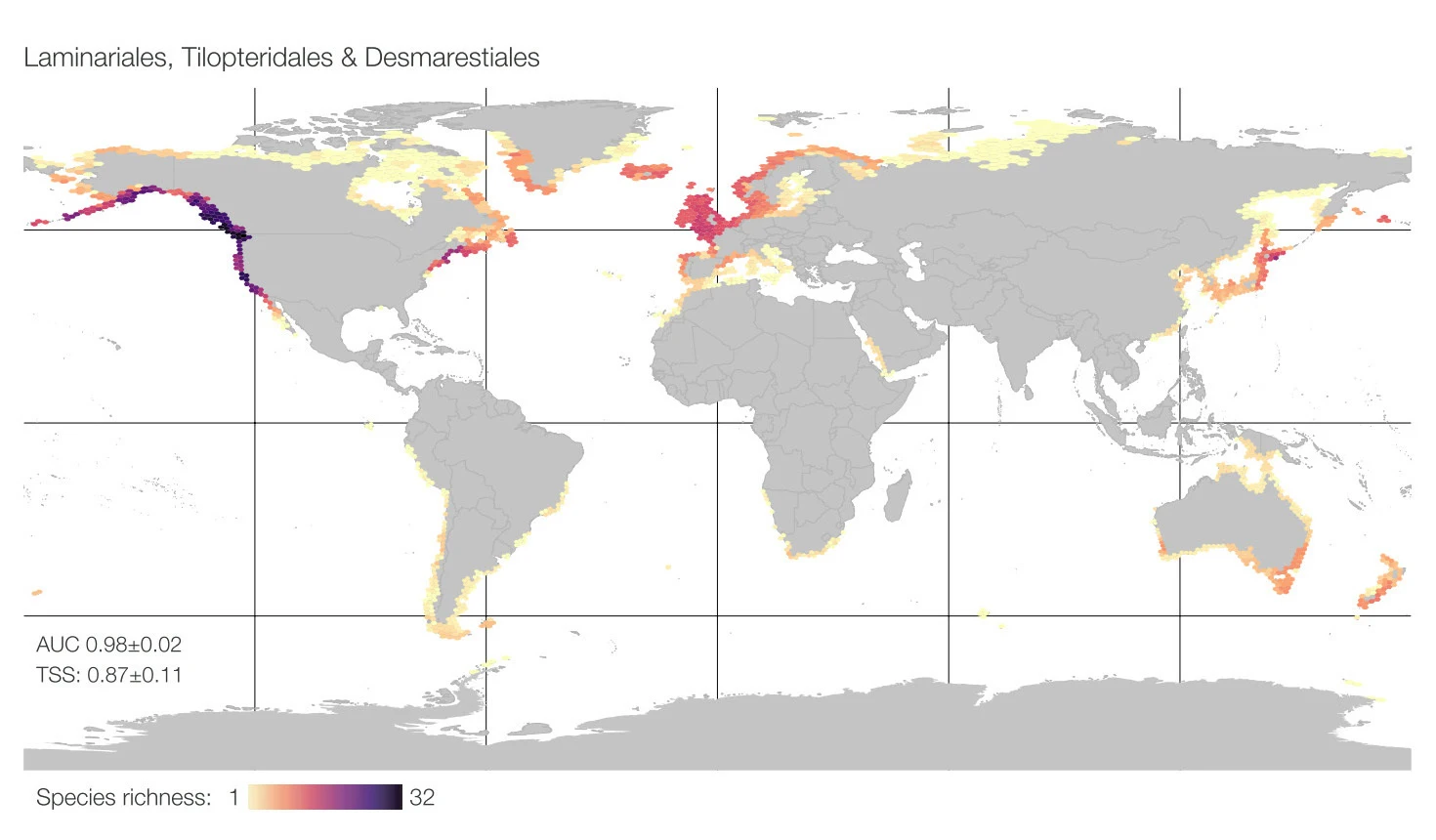Scientific publication
Mapping the global biodiversity patterns of marine forests
Stacked species distribution modelling identifies regions of high and low species richness and endemicity of marine forests of brown algae globally.
Credits: Photo by Karen Chew on Unsplash
In a world where climate change is altering the global biodiversity patterns faster than we can keep track of, it is critical to establish current baseline conditions to support well-informed biodiversity assessments and effective conservation management. For the marine environment, however, such information is often unavailable. In this publication, we use a fine-tuned dataset of marine forest occurrences for 420 species , together with meaningful environmental predictors extracted from Bio-ORACLE dataset (e.g., light availability for photosynthesis, nutrients for their growth, etc.) to develop machine learning species distribution models. Stacking the individual models together, allowed us to identify the main environmental drivers shaping the distribution of marine forests and map their global biodiversity patterns.

We find regions of high species richness along the northeast Pacific and southeast Australia coasts and low species richness at high latitudes. Endemicity centers were identified in the Galapagos Islands, Antarctica, South Africa and East Russia. Overall, we find biodiversity patterns in line with hypotheses of the evolutionary origin of the species.
The mapped biodiversity patterns establish new global baseline information on marine forests that can be used for planning and prioritizing locations for conservation, management and climate change mitigation strategies, directing efforts both at biodiversity-rich (targeting multiple species) and poor regions, where ecological functions depend on only a few species.
Main reference
Fragkopoulou, E., Serrão, E. A., Clerck, O. De, Costello, M. J., Araújo, M. B., Duarte, C. M., Krause-Jensen, D., & Assis, J. (2022). Global biodiversity patterns of marine forests of brown macroalgae. Global Ecology & Biogeography.
- Featured publications